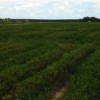 This 10-page fact sheet summarizes the 2013 in-furrow and foliar fungicide programs for control of early and late leaf spot and white mold (southern stem rot) of peanut in Jay, Florida. It shows the effectiveness of 13 fungicide programs for disease control, as compared to no treatment. This data represents only one year and one location, and readers are cautioned that test results should be considered over several locations and years before final conclusions are valid. Written by Darcy E. P. Telenko, John Atkins, and Nick Dufault, and published by the UF Department of Plant Pathology, January 2014.
This 10-page fact sheet summarizes the 2013 in-furrow and foliar fungicide programs for control of early and late leaf spot and white mold (southern stem rot) of peanut in Jay, Florida. It shows the effectiveness of 13 fungicide programs for disease control, as compared to no treatment. This data represents only one year and one location, and readers are cautioned that test results should be considered over several locations and years before final conclusions are valid. Written by Darcy E. P. Telenko, John Atkins, and Nick Dufault, and published by the UF Department of Plant Pathology, January 2014.
http://edis.ifas.ufl.edu/pp310
Tag: Darcy E. Patridge-Telenko
2013 Sweet Corn Variety Performance Trial, Jay, Florida
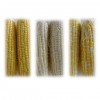 This 5-page fact sheet summarizes the 2013 sweet corn variety trial at the UF West Florida Research and Education Center Jay Research farm in Jay, Florida. It shows the performance of fifteen commercial and experimental Sh2 (supersweet) sweet corn varieties. This data only represents one year and one location; test results should be considered over several years and locations before final conclusions are valid. Written by Darcy Telenko, Libby Johnson, and William Wendt, and published by the UF Department of Horticultural Sciences, November 2014.
This 5-page fact sheet summarizes the 2013 sweet corn variety trial at the UF West Florida Research and Education Center Jay Research farm in Jay, Florida. It shows the performance of fifteen commercial and experimental Sh2 (supersweet) sweet corn varieties. This data only represents one year and one location; test results should be considered over several years and locations before final conclusions are valid. Written by Darcy Telenko, Libby Johnson, and William Wendt, and published by the UF Department of Horticultural Sciences, November 2014.
http://edis.ifas.ufl.edu/hs1236
Violet Biology and Management in Turf
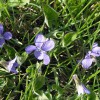 Violets (Viola spp.) are diverse winter annuals and perennials. Perennials form rhizomes or long stolons. Many have heart-shaped leaves on long petioles and have a rosette growth habit. Some have linear leaves and others have palmate leaves. Flowers are generally purple, but can be white, pink or yellow. They reproduce by seed or, when produced, rhizomes. This 2-page fact sheet was written by Darcy E. P. Telenko, Barry J. Brecke, Ramon Leon, and J. Bryan Unruh, and published by the UF Department of Environmental Horticulture, December 2013.
Violets (Viola spp.) are diverse winter annuals and perennials. Perennials form rhizomes or long stolons. Many have heart-shaped leaves on long petioles and have a rosette growth habit. Some have linear leaves and others have palmate leaves. Flowers are generally purple, but can be white, pink or yellow. They reproduce by seed or, when produced, rhizomes. This 2-page fact sheet was written by Darcy E. P. Telenko, Barry J. Brecke, Ramon Leon, and J. Bryan Unruh, and published by the UF Department of Environmental Horticulture, December 2013.
http://edis.ifas.ufl.edu/ep496
Spreading Dayflower Biology and Management in Turf
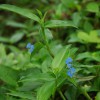 Spreading dayflower (Commelina diffusa) is a succulent annual that produces freely branched smooth stems. Leaves are broadly lance-shaped with closed sheaths. Sheaths are short with a few soft hairs on the upper margin. Flowers have three blue petals in a leaf-like structure open on the margins. Reproduction occurs via seed and stem fragments. This 2-page fact sheet was written by J. Bryan Unruh, Darcy E. P. Telenko, Barry J. Brecke, and Ramon Leon, and published by the UF Department of Environmental Horticulture, December 2013.
Spreading dayflower (Commelina diffusa) is a succulent annual that produces freely branched smooth stems. Leaves are broadly lance-shaped with closed sheaths. Sheaths are short with a few soft hairs on the upper margin. Flowers have three blue petals in a leaf-like structure open on the margins. Reproduction occurs via seed and stem fragments. This 2-page fact sheet was written by J. Bryan Unruh, Darcy E. P. Telenko, Barry J. Brecke, and Ramon Leon, and published by the UF Department of Environmental Horticulture, December 2013.
http://edis.ifas.ufl.edu/ep497
2013 Evaluation of Non-Irrigated Early-Maturing Cotton Varieties in Jay, Florida
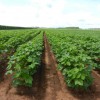 This report includes a summary of the 2013 early-season cotton Official Variety Trial in Jay, Florida. It shows the performance of 11 cotton varieties. This data represents only one year and one location, and readers are cautioned that test results should be considered over several locations and years before final conclusions are valid. This 5-page fact sheet was written by Darcy Telenko and Michael Donahoe , and published by the UF Department of Agronomy, January 2014.
This report includes a summary of the 2013 early-season cotton Official Variety Trial in Jay, Florida. It shows the performance of 11 cotton varieties. This data represents only one year and one location, and readers are cautioned that test results should be considered over several locations and years before final conclusions are valid. This 5-page fact sheet was written by Darcy Telenko and Michael Donahoe , and published by the UF Department of Agronomy, January 2014.
http://edis.ifas.ufl.edu/ag378
Black Medic Biology and Management in Turf
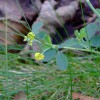 Black medic (Medicago lupulina) is a dark green annual with spreading, prostrate growth. Leaves are alternate with three leaflets on square stems. Leaflets are obovate to elliptic, toothed near the tip, and have a small spur on the tip. Bright yellow flowers are produced in tight, compressed clusters at leaf axils. Reproduction occurs via seed in tightly coiled black seed pods. This 2-page fact sheet was written by Barry J. Brecke, Ramon Leon, J. Bryan Unruh, and Darcy E. P. Telenko, and published by the UF Department of Environmental Horticulture, December 2014.
Black medic (Medicago lupulina) is a dark green annual with spreading, prostrate growth. Leaves are alternate with three leaflets on square stems. Leaflets are obovate to elliptic, toothed near the tip, and have a small spur on the tip. Bright yellow flowers are produced in tight, compressed clusters at leaf axils. Reproduction occurs via seed in tightly coiled black seed pods. This 2-page fact sheet was written by Barry J. Brecke, Ramon Leon, J. Bryan Unruh, and Darcy E. P. Telenko, and published by the UF Department of Environmental Horticulture, December 2014.
http://edis.ifas.ufl.edu/ep494
Sedge Biology and Management in Turf
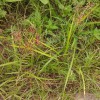 Members of the sedge family have leaves that are composed of a blade, sheath, and ligule. The leaf sheath is closed and the ligule is often absent, and when present is tiny. Stem structure is often triangular.This 3-page fact sheet was written by D. E. P. Telenko, Ramon Leon, J. Bryan Unruh, and B. J. Brecke, and published by the UF Department of Environmental Horticulture, December 2014.
Members of the sedge family have leaves that are composed of a blade, sheath, and ligule. The leaf sheath is closed and the ligule is often absent, and when present is tiny. Stem structure is often triangular.This 3-page fact sheet was written by D. E. P. Telenko, Ramon Leon, J. Bryan Unruh, and B. J. Brecke, and published by the UF Department of Environmental Horticulture, December 2014.
http://edis.ifas.ufl.edu/ep492
Old World Diamond-Flower Biology and Management in Turf
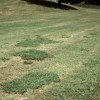 Old world diamond-flower is a smooth, spreading summer annual. It has branched stems with opposite, narrow leaves. Flowers are white, usually with two or more on long stalks extending from the tip of a common long stalk. Flowers occur from midsummer until frost. Reproduction occurs by seed. Found in moist areas, especially areas that have been disturbed. This 2-page fact sheet was written by Darcy E. P. Telenko, Barry J. Brecke, Ramon Leon, and J. Bryan Unruh, and published by the UF Department of Environmental Horticulture, December 2013.
Old world diamond-flower is a smooth, spreading summer annual. It has branched stems with opposite, narrow leaves. Flowers are white, usually with two or more on long stalks extending from the tip of a common long stalk. Flowers occur from midsummer until frost. Reproduction occurs by seed. Found in moist areas, especially areas that have been disturbed. This 2-page fact sheet was written by Darcy E. P. Telenko, Barry J. Brecke, Ramon Leon, and J. Bryan Unruh, and published by the UF Department of Environmental Horticulture, December 2013.
http://edis.ifas.ufl.edu/ep493
Erect and Prostrate Spurge Biology and Management in Turf
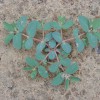 Erect and prostrate spurges are erect or upright annuals with branched stems. Leaves are opposite and not equal. Stems produce “milky sap.” A large number of spurge species occur in Florida. Reproduction occurs via seed. This 2-page fact sheet was written by J. Bryan Unruh, Darcy E. P. Telenko, Barry J. Brecke, and Ramon Leon, and published by the UF Department of Environmental Horticulture, December 2013.
Erect and prostrate spurges are erect or upright annuals with branched stems. Leaves are opposite and not equal. Stems produce “milky sap.” A large number of spurge species occur in Florida. Reproduction occurs via seed. This 2-page fact sheet was written by J. Bryan Unruh, Darcy E. P. Telenko, Barry J. Brecke, and Ramon Leon, and published by the UF Department of Environmental Horticulture, December 2013.
http://edis.ifas.ufl.edu/ep495
2013 Evaluation of Non-Irrigated Mid- to Full-Season Maturing Cotton Varieties in Jay, Florida
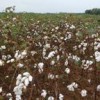 This report includes a summary of the 2013 mid- to full-season cotton Official Variety Trial in Jay, Florida. It shows the performance of 16 cotton varieties. This data represents only one year and one location, and readers are cautioned that test results should be considered over several locations and years before final conclusions are valid. This 5-page fact sheet was written by Darcy E. P. Telenko and Michael Donahoe, and published by the UF Department of Agronomy, January 2014.
This report includes a summary of the 2013 mid- to full-season cotton Official Variety Trial in Jay, Florida. It shows the performance of 16 cotton varieties. This data represents only one year and one location, and readers are cautioned that test results should be considered over several locations and years before final conclusions are valid. This 5-page fact sheet was written by Darcy E. P. Telenko and Michael Donahoe, and published by the UF Department of Agronomy, January 2014.
http://edis.ifas.ufl.edu/ag377
Weed Biology and Management in Turf series
This series of 1-2 page illustrated fact sheets by J. Bryan Unruh, Darcy E. Partridge-Telenko, and Barry J. Brecke highlight key facts about each weed, and include herbicide options for each variety of Florida turfgrass. Published by the UF Department of Environmental Horticulture, June 2009.
- ENH1124/EP385 Yellow Woodsorrel (Oxalis) Biology and Management in Turf
- ENH1125/EP386 Virginia Buttonweed Biology and Management in Turf
- ENH1126/EP387 Torpedograss Biology and Management in Turf
- ENH1127/EP388 Florida Betony Biology and Management in Turf
- ENH1128/EP389 Pennywort (Dollarweed) Biology and Management
- ENH1131/EP392 Annual Bluegrass Biology and Management in Turf
- ENH1132/EP393 Tropical Signalgrass Biology and Management in Turf
- ENH1133/EP394 Goosegrass Biology and Management in Turf
- ENH1134/EP395 Crabgrass Biology and Management in Turf
http://edis.ifas.ufl.edu/TOPIC_SERIES_Weed_Biology_and_Management_in_Turf